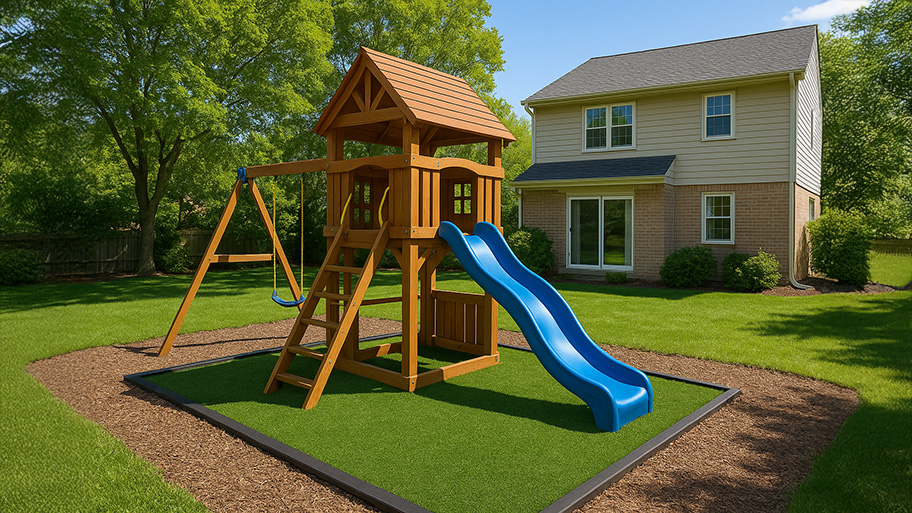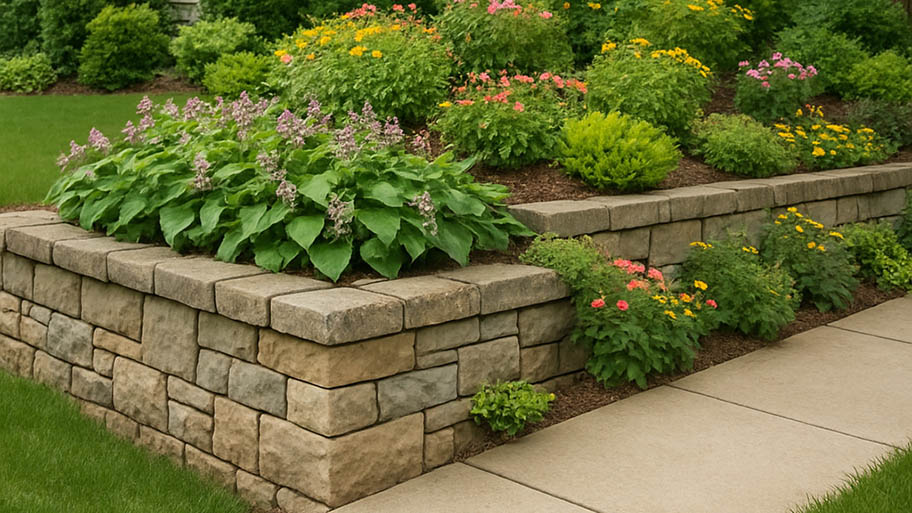
Landscape curbing can really improve the look of a yard, but at what cost? Find out how much it costs and the different ways you can do it
Never say never, but you're probably better off with flowers, mulch, or rocks


Growing grass underneath pine trees is difficult due to acidic soil, lack of sun, and pine needles.
Certain shady plants and flowers may be better alternatives for sustainable growth.
Landscaping options like rocks, gravel, or mulch can also be effective.
Pine trees offer year-round beauty for homeowners, with their unique look and shelter for wildlife. Even though pine trees are some of the most common trees on the East Coast, Rocky Mountains, southwestern mountain ranges, and Great Lakes region—you may be frustrated if you’ve been trying to grow grass underneath a pine tree. Learn why growing grass under pine trees is tricky and some alternative ideas to try.
The short answer is that while you should never say never, growing grass underneath pine is difficult.
Many homeowners find it challenging to grow grass seed underneath coniferous resinous trees (a fun way of saying pine). Those who achieve their goal may find it grows patchy, slowly, or dies at the end of the warm season.
You may be more successful with certain types of grass, like Ryegrass, that can still thrive in the shade. But you may struggle no matter which type of grass seed you use.
There are three reasons why growing grass under pine trees is tough.
First, the soil underneath pine trees is more acidic. Most lawns require a pH between 6.5 and 7 (neutral, skewing towards slightly acidic) for sustainable growth. Pine tree soil can be as low as 3 on the pH scale.
Second, sunlight—which new grass needs to grow—is much harder to come by when tall pine trees overlook the area you're trying to seed.
Lastly, pine needles that fall from trees can act like a blanket on the ground that smothers grass seed. All of these factors make it very challenging to grow grass underneath pine trees.

Like most types of grass, certain plants may struggle to grow underneath lots of pine trees. However, growing some plants and flowers that don’t mind growing in acidic soil and shady conditions could be good alternatives to grass.
Lungwort
Digitalis (known as foxgloves)
Primrose
Spotted deadnettle
Ferns
Wild ginger
Certain perennial flowers can also thrive in acidic soil like columbine and Jacob's ladder. Consider flowers and plants that grow in mountainous regions, such as the Rockies, where pine trees and other plants are abundant. You might find unique flowers or plants to add to your home.
If you want to give grass a go under your pine trees, you’ll need to take special care and choose the type of grass carefully according to your hardiness zone. Hardy grass can take hold in the shady pines with proper preparation and care. The following steps provide more details:
Clear the area: Remove pine needles, twigs, and other debris for access to the soil beneath.
Till the soil: You don’t want to damage the tree’s root system, so only till as deep as the roots allow. Ideally, that’s about 6 inches, but it could be less if the roots are near the surface.
Test the soil for acidity: To reduce acidity, check the soil and fertilize it with lime as needed. Grass seeds prefer a soil pH level between 6.5 and 7.
Increase sunlight: Branches below 10 feet can block adequate sunlight. Remove as many branches as possible below the 10-foot line and prune the upper branches to allow sunlight to reach the grass seed.
Plant the grass seed: Plant the grass seed according to the manufacturer’s instructions. Pick grass with a high shade tolerance, like fescue and rough bluegrass for colder climates and centipede and zoysia for warmer climates. Another option is an ornamental grass that thrives in shade, such as liriope or birdfoot sedge. Also, seriously consider native prairie grasses for landscaping under your pines. They’re tolerant of poor soil and can handle drought conditions.
Make sure the grass gets plenty of water. Once it’s taken root, regularly remove the pine needles to help it get enough light and keep the acidity down.
Another option is to add landscaping ground cover like mulch or rocks underneath your pine trees. It requires less maintenance than trying to grow any type of plant and still gives your yard a nice upgrade in terms of looks. If you’ve got a large area to cover or you’re not sure which type or how much mulch you need, a local mulching company can deliver and spread it for you.
Mulch is an excellent landscaping option for weedy growth areas underneath pine trees because pine needles mulch themselves as they fall, so they’ll regularly replenish the soil underneath your trees.
If you're thinking about changing up your backyard landscape, installing a pavers walkway through your pine could be a unique way to show off the natural beauty in your yard.
Ben Kissam contributed to this piece.
From average costs to expert advice, get all the answers you need to get your job done.

Landscape curbing can really improve the look of a yard, but at what cost? Find out how much it costs and the different ways you can do it

We break down the cost to remove bamboo, which is slightly higher than other forms of tree removal. It's a difficult DIY task because of bamboo's hardy underground roots.

What are average sod installation prices? Learn how much sod costs based on factors like square footage, land prep, land condition, and more.

Artificial grass can enhance your home’s curb appeal with very little upkeep. Learn how to choose the artificial grass that’s right for your yard.

There is no one-size-fits-all retaining wall for your yard. In fact, the options are endless. Check out 20 retaining wall ideas to upgrade your hardscape.

The cost of topsoil varies based on the size of the area and the depth, as well as prep and labor. This article covers everything to factor into your budget.